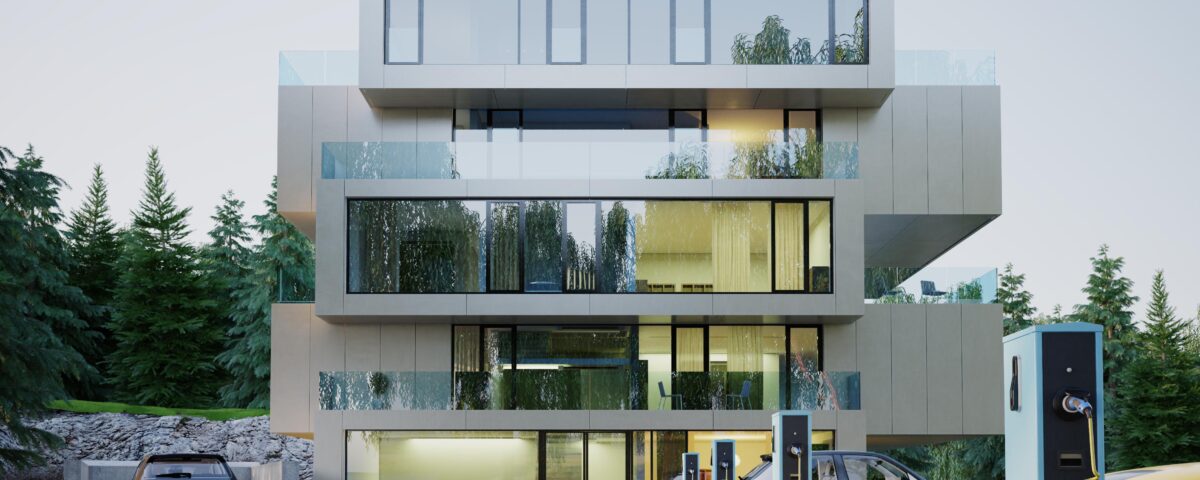
Winterizing Your Home: Construction Tips for Seasonal Changes.
November 18, 2024
How to Incorporate Green Spaces into Your Home Design
November 19, 2024In Pakistan’s rapidly growing urban landscape, the need for efficient space utilization in home designs has become a pressing concern. Cities like Karachi, Lahore, and Islamabad are experiencing increased population densities, leading to smaller and more compact living spaces. Whether you reside in an apartment, townhouse, or a single-family home with limited square footage, innovative design solutions can enhance functionality and aesthetic appeal. This comprehensive guide offers practical strategies, tailored to Pakistani urban homes, for making the most of every inch of your living space.
1. Urban Living in Pakistan: Challenges of Compact Spaces
Increasing Urbanization and Population Growth in Major Cities
The ongoing migration to cities has led to unprecedented urbanization in Pakistan. The Pakistan Bureau of Statistics reports that more than 36% of the country’s population now resides in urban areas, with cities like Lahore and Karachi facing the highest density levels. As a result, smaller housing units are becoming the norm, especially for middle-income families. These developments necessitate smarter space management in home designs.
The Growing Trend of Compact Housing Solutions
With rising real estate costs and limited land availability, compact apartments and townhouses are becoming the preferred choice for many urban dwellers. These homes often come with unique spatial challenges, requiring innovative design solutions to ensure they remain functional and comfortable without feeling cramped.
Cultural and Practical Needs in Urban Pakistani Homes
Pakistani families often value traditional spaces such as separate guest areas and prayer rooms. Adapting these cultural requirements within compact home layouts demands creative strategies. Homes must accommodate both contemporary living standards and cultural sensitivities while maximizing limited space.
2. Multi-Functional Furniture: The Key to Saving Space
Revolutionizing Living Areas with Convertible Furniture
Multi-functional furniture can transform urban living areas. For example, a sofa bed serves as a comfortable seating option during the day and converts into a bed at night. Similarly, Murphy beds that fold into walls can provide sleeping accommodations without occupying floor space during the day.
Dining Solutions for Small Homes
Expandable dining tables are perfect for urban Pakistani households. They can be adjusted to seat more people when hosting guests, addressing the cultural importance of hospitality. Wall-mounted drop-leaf tables are another excellent option for compact kitchens and dining rooms.
Combining Aesthetics and Functionality
Investing in furniture pieces like storage ottomans, which serve dual purposes, can help declutter spaces while maintaining a modern look. Websites such as IKEA offer an array of furniture options designed specifically for small homes.
3. Vertical Storage: Utilizing Height to Maximize Space
Optimizing Walls for Storage and Decor
When floor space is limited, walls become valuable real estate. Installing wall-mounted shelves and cabinets is an effective way to keep items organized while maintaining a clean and open floor plan. For example, decorative shelving can double as storage and an aesthetic element in living rooms.
Creating Vertical Storage in Kitchens
Pakistani kitchens often serve as both cooking and storage hubs, making vertical storage essential. Overhead cabinets and pull-out pantry shelves are perfect for storing utensils, spices, and pantry items without taking up precious countertop space.
Smart Vertical Solutions for Bedrooms and Bathrooms
Bedrooms can benefit from floor-to-ceiling wardrobes that provide ample storage for clothes, bedding, and accessories. In bathrooms, wall-mounted racks and hooks are perfect for towels and toiletries, ensuring a neat and functional layout. For more ideas, visit Houzz.
4. Modular Kitchens: Redefining Efficiency
What Are Modular Kitchens and Why Are They Essential?
Modular kitchens are tailored to optimize space in urban homes. These kitchens use pre-designed modules for cabinets, drawers, and appliances to create a cohesive and efficient layout. For Pakistani homes, modular kitchens are particularly useful as they allow customization to fit cultural cooking needs.
Space-Saving Features in Modular Kitchens
Features like pull-out pantry units, corner cabinets with rotating shelves, and built-in appliances reduce clutter and make cooking more efficient. These kitchens not only enhance utility but also add a touch of sophistication.
Affordable Modular Kitchen Designs for Pakistani Homes
Affordable modular kitchen solutions are increasingly available in Pakistan. Local manufacturers and services such as Develoscape Architects and Consultants offer tailored designs that balance cost and quality, making them accessible for middle-income households.
5. Open Floor Plans: Creating an Illusion of Spaciousness
Benefits of Removing Unnecessary Walls
Combining living, dining, and kitchen areas into one cohesive space eliminates visual barriers, making small homes feel larger. This approach also enhances natural light flow, creating a more inviting and airy environment.
Strategic Zoning in Open Floor Plans
Although open floor plans remove walls, defining different zones remains crucial. For instance, area rugs or lighting fixtures can visually separate the dining and living areas without compromising openness.
Adapting Open Plans to Pakistani Cultural Norms
Pakistani households often value separate spaces for guests and family. Open plans can still accommodate this by using partitions or curtains to create temporary divisions as needed.
6. Mirrors and Light: Enhancing Perception of Space
Using Mirrors to Create Depth and Dimension
Mirrors are one of the easiest ways to make a room appear larger. Placing a large mirror opposite a window reflects natural light, creating an illusion of added depth and space. Mirror-backed shelving units are another clever way to combine storage with spatial enhancement.
Natural Lighting: A Vital Element for Small Homes
Maximizing natural light reduces the need for artificial lighting, saving energy and improving ambiance. Large windows, skylights, and light-colored curtains can brighten up small spaces. For energy-efficient solutions, visit the World Green Building Council.
Choosing Light Fixtures for Compact Homes
Recessed lighting and pendant lamps are excellent choices for small rooms as they don’t occupy floor or table space. Incorporating dimmable lights also allows you to adjust the mood and functionality of a space.
7. Decluttering and Organization: The Minimalist Approach
The Art of Letting Go
A minimalist lifestyle helps keep clutter to a minimum. Regularly decluttering your home ensures that only essential and meaningful items remain. Tools like storage bins and labels can make this process more systematic.
Hidden Storage Options for Small Homes
Furniture with hidden compartments, such as beds with under-mattress storage or benches with lift-up seats, is ideal for keeping items out of sight while maximizing available space.
Professional Tips for Maintaining Organization
Following professional methods like Marie Kondo’s KonMari method can help maintain order and reduce the mental burden of a cluttered home.
8. Creating Outdoor Spaces in Urban Settings
Balconies as Miniature Gardens
Even the smallest balcony can become a serene retreat. Wall-mounted planters, vertical gardens, and compact furniture make outdoor spaces functional and beautiful.
Rooftop Gardens for Larger Urban Homes
In urban areas where backyards are scarce, rooftops can serve as excellent alternatives. Install durable furniture and use potted plants to create an eco-friendly relaxation space.
Incorporating Pakistani Aesthetics in Outdoor Areas
Elements like clay pots, string lights, and traditional rattan furniture add a cultural touch to outdoor spaces while remaining practical.
9. Sustainable Urban Home Designs: A Growing Trend
Eco-Friendly Materials in Space Optimization
Using recycled materials like reclaimed wood or bamboo not only helps the environment but also adds a rustic charm to interiors. Incorporating such materials aligns with sustainable building practices gaining popularity in Pakistan.
Energy Efficiency in Small Spaces
Compact homes consume less energy, but additional measures like solar panels, LED lighting, and energy-efficient windows further reduce utility bills and environmental impact.
Rainwater Harvesting Systems in Urban Areas
With increasing water scarcity in cities, rainwater harvesting systems are a smart addition. Roofs equipped with these systems can collect and store rainwater for household use. For more sustainable practices, visit Better Homes & Gardens.
10. Professional Help for Space-Efficient Designs
The Role of Architects in Urban Home Designs
Architects bring expertise to space optimization, blending aesthetics with practicality. Firms like Develoscape Architects and Consultants specialize in creating personalized designs that cater to the unique needs of Pakistani households.
Cost vs. Benefit of Hiring Professionals
While hiring professionals might seem costly, the long-term benefits of a well-designed space often outweigh the initial expenses. A professionally designed home can save money on energy and maintenance in the future, visit Nippon IT Solutions.
Customizing Small Homes for Growing Families
For families expecting growth, architects can design adaptable layouts that accommodate future changes without compromising current functionality.
Conclusion
Maximizing space in urban home designs requires creativity, thoughtful planning, and an understanding of evolving trends. By incorporating these practical tips, homeowners in Pakistan can create comfortable and functional living spaces without sacrificing style or cultural values. Whether you’re planning a new home or renovating an existing one, consulting experts like Develoscape Architects and Consultants ensure that your urban design meets the highest standards of efficiency and elegance.

